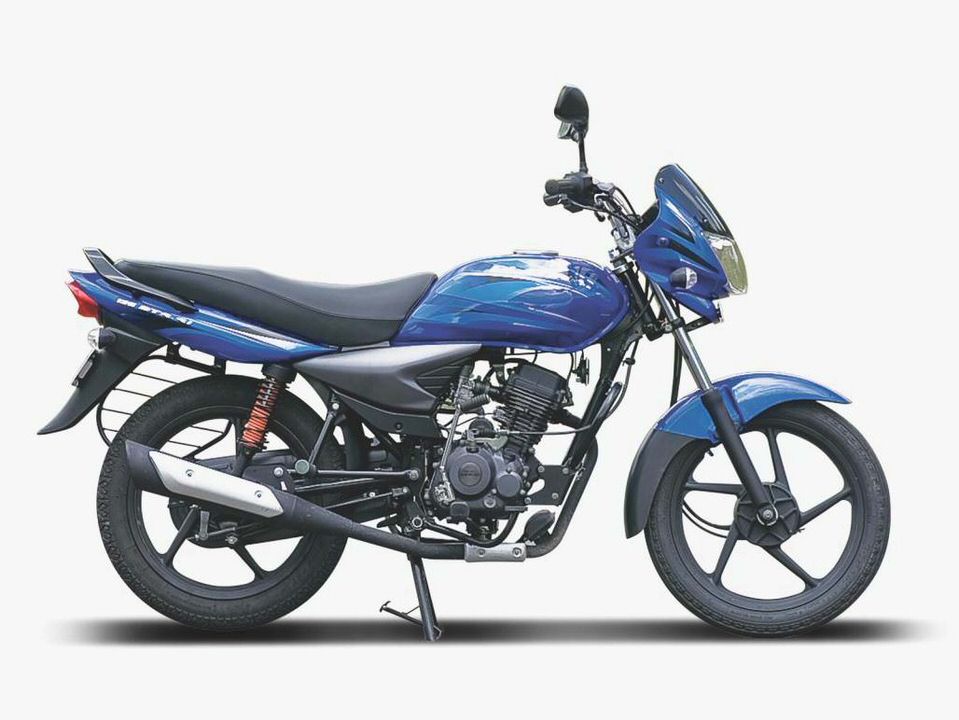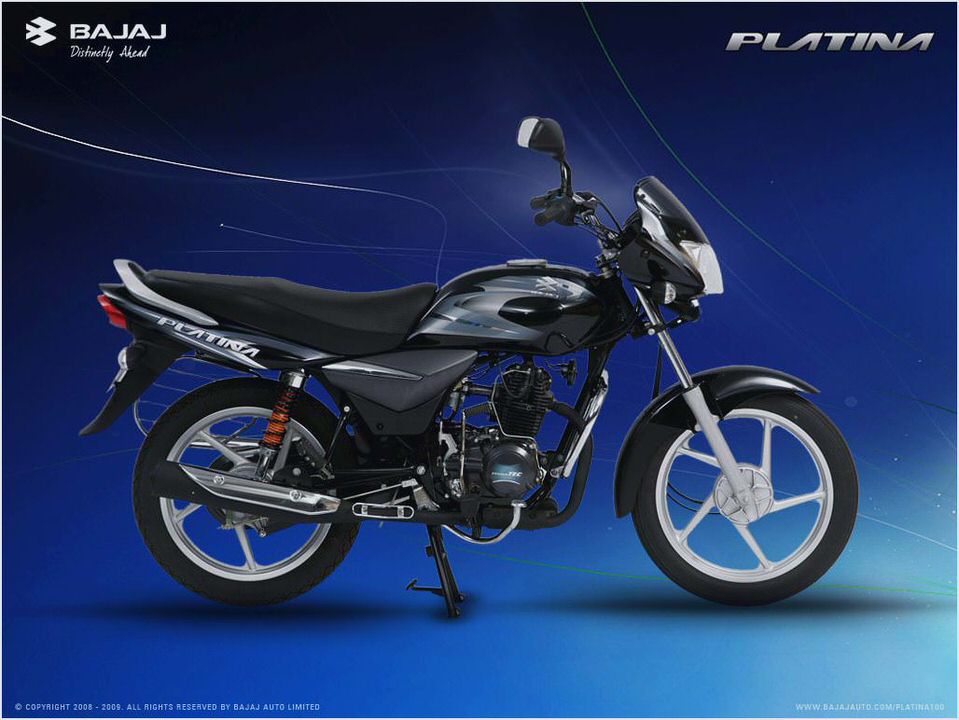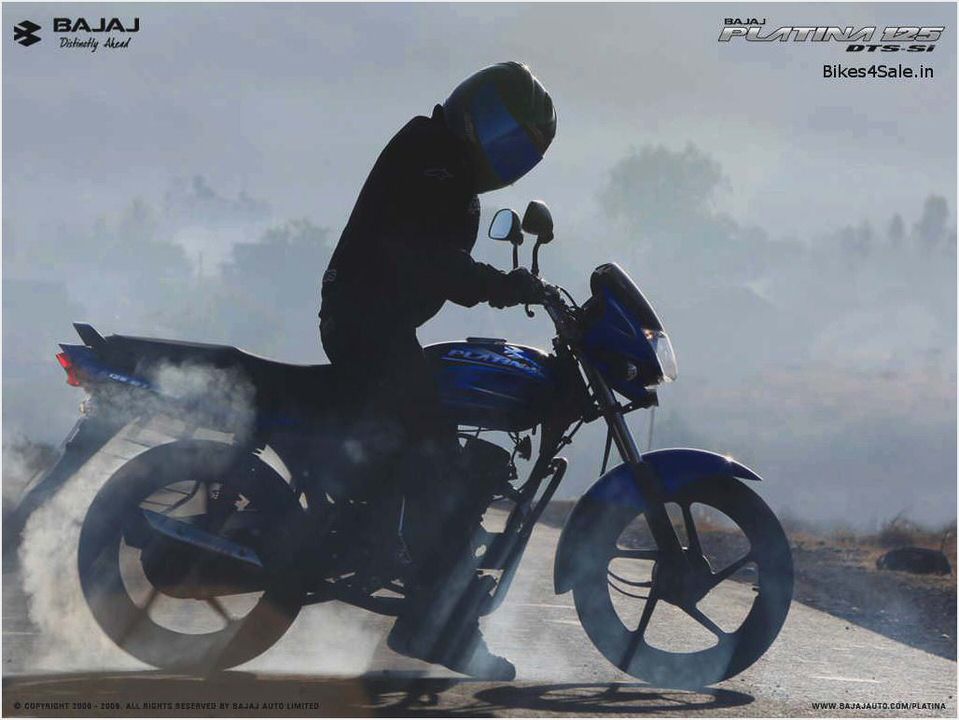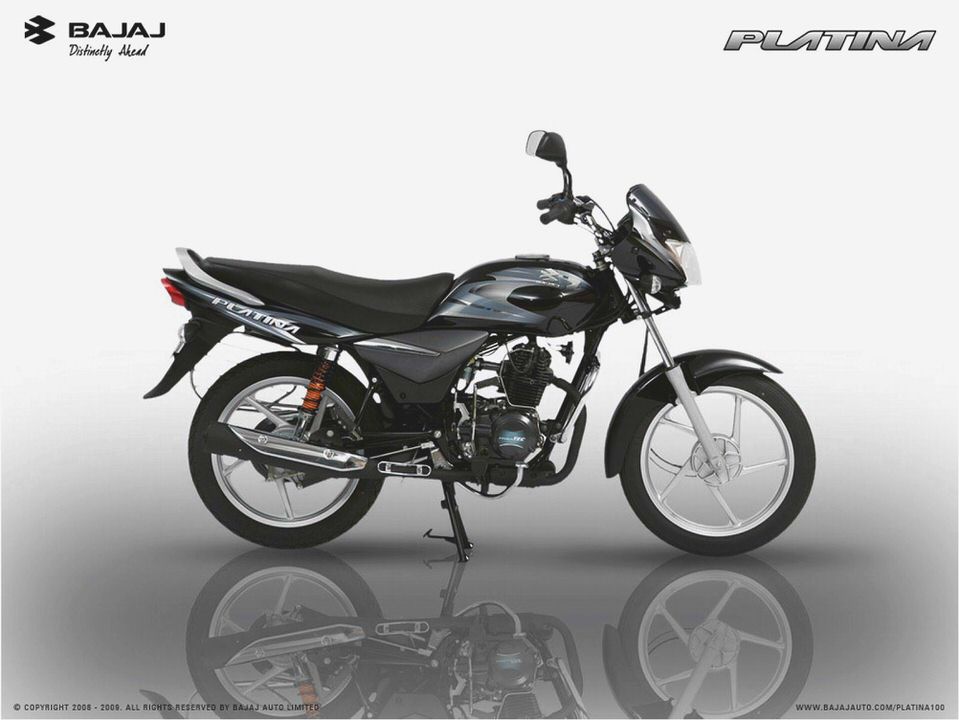
Best Entry-Level Bike
Overview
Performance motorcycles in the “Commuter” class have brought Bajaj significant success, and the Bajaj Platina is a new entry in its popular line-up, aimed at the very lowest end of the market, where profit margins are tight but there’s plenty of potential for great success, with the right bike. So how well does the Platina set itself apart?
Design and Style
Bajaj Platina is a solid but unremarkable bike from Bajaj, whose design team are severely limited by the hardware considerations of a bike at the budget end of the market. The Platina appears to be inspired by the earlier Bajaj Wind 125, with its distinctive fairing and panels, and the sharply formed tail lamp. The bike’s slimmer, lower and slightly extended body isn’t particularly eye-catching, and the design doesn’t have any standout features – but there’s little here that will offend.
The Platina’s instrument console reflects the budget considerations of the bike. Unlike its swankier cousins, it features only an analogue instrument console, including analogue speedometer and analogue fuel gauge. The whole unit is very stripped down, with no indicators for low fuel, low oil or low battery.
Nevertheless, all of the displays are clear and easy to read.
The Platina is equipped with a 99.27cc air-cooled engine. It’s capable of a maximum power of 8.3 PS at 7500 rpm . and a maximum torque of 8.05 Nm at 4500 rpm . The engine features a four-speed gearbox.
Bajaj claims that the Platina’s modest but capable engine will push the bike to a maximum speed of 90 kmph . which is a respectable showing for a bike in the 100cc class. In tests, the bike consistently maxes out at between 85 and 87 kmph, which will be more than adequate for most buyers in this price range. The bike’s acceleration is average, as you’ll expect from a 100cc: it can accelerate from 0 to 60 kmph in 9.68 seconds, which is respectable but not remarkable.
If acceleration is a crucial consideration, you should consider upgrading to the 125cc class – but it’s adequate for this bike.
Bajaj Platina incorporates the ExhausTEC system seen on many of Bajaj’s upgraded newer models. The Torque Expansion Chamber technology reduces the need to use the clutch, and removes the need for frequent gearshifts to accelerate, intended to provide greater fuel efficiency. The Platina has, Bajaj claims, an average fuel mileage of 65 kmpl for driving at a constant speed of roughly 50 kmph.
Under testing, the Platina provides a mileage of approximately 53 to 57 kmpl, which falls to about 48 kmpl in city areas, which is a strong offering that is perfectly in line with the bike’s budget credentials. The fuel tank has a capacity of 13 litres.
Despite being a budget bike, the Platina manages to offer a relatively comfortable and rider-friendly driving experience . It offers decent comfort for driver and pillion alike – the rear grab rail is well positioned for stability, and the bike also includes a ride control switch. The bike’s suspension system is average to good, absorbing the majority of shocks from the road surface – but don’t take it off road, or you’ll start to see it sorely challenged.
Unfortunately, to keep costs down Bajaj has neglected to include much in the way of additional safety features, beyond the upgraded grab rail. Nevertheless, the bike’s general safety is good.
Like the other Bajaj budget models, there’s little in the way on-board storage space on the Platina model of motorbike.

The Platina’s suspension takes its cue from the other budget bikes released by Bajaj. At the front and back, it features hydraulic telescopic type suspension with a travel of 125mm. This setup is designed to cope with unfriendly terrain and bad road conditions.
In practice, the bike’s suspension performs reasonably well: it absorbs shocks and shakes, even managing to provide a smooth ride at top speeds on poorer road surfaces, and it keeps vibrations to the minimum.
Bajaj Platina is equipped with the budget brakes seen on other models that appear at the lower end of the market: at the front, 130 mm drum brakes . and at the rear 130 mm drum brakes. While this is nothing remarkable, the brakes are effective and responsive, remaining stable and providing a stopping distance of just 20.3 meters from 60 to 0 kmph.
Bajaj Platina is a comfortable, well-designed and stable ride. Its engine generates quite a lot of noise, particularly at higher revs, but nothing outrageous. The bike’s handling is generally smooth and consistent, although it can weigh slightly heavy on leans.
The bike does come equipped with alloy wheels. The front tyre is a 2.75 x 17” . while the rear is a 3.00 x 17” – standard for a bike of this class. The tyres stand up generally well to road surfaces, and do well on dry surfaces with some unevenness – but they perform poorly on wet or slick surfaces, and should not be taken off road.
Additional accessories for the Platina, such as seat covers or all-bike covers, must be bought separately from the standard model.
The Platina is available in only one variant ; the Platina 125 has been discontinued.
Bajaj Platina, being very much a budget bike, offers few distinctive features to set it apart from other bikes.
Bajaj Platina’s successor is the Bajaj Pulsar 135, and if performance or acceleration is important to you as a driver, you should seriously consider opting for that more accomplished model. For those on a tight budget who want decent performance and reliable hardware, the Platina is a strong offering from Bajaj, one that has secured their success in this segment of the vehicle market.



- Bajaj Avenger 220 Test Drive New Bikes in India
- Bajaj Auto flags off Kawasaki tie-up for Philippines
- Specifications of a Pulsar 200 eHow
- Bajaj Wave Design, Review, Technical Specifications – Price
- Bajaj XCD Recall – Team-BHP
